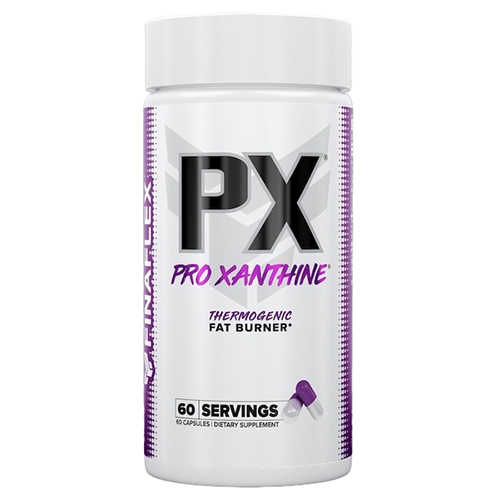Obesity is a growing concern worldwide, with the prevalence of this condition increasing significantly over the past decade. As a result, researchers and experts have been exploring different strategies and tools for obesity management. One such approach involves the use of various substances, including caffeine, ephedrine, capsaicin, and green tea, which have been found to potentially aid in weight loss and weight maintenance.
These substances are believed to increase energy expenditure and counteract the decrease in metabolic rate that often occurs during weight loss. One combination that has shown promising results in long-term weight management is caffeine and ephedrine. It is believed that these substances work through different mechanisms that synergistically contribute to their effectiveness.
1. Introduction to Thermogenesis
What is Thermogenesis?
Thermogenesis is the process by which the body generates heat through metabolic activity. It involves the conversion of stored energy, such as glucose and fatty acids, into heat energy. This metabolic process plays a crucial role in maintaining body temperature and regulating energy balance.

Types of Thermogenesis
There are three main types of thermogenesis: basal metabolic rate (BMR), adaptive thermogenesis, and non-shivering thermogenesis. BMR refers to the energy expenditure required to maintain essential bodily functions at rest. Adaptive thermogenesis occurs in response to environmental changes, such as exposure to cold temperatures or changes in diet. Non-shivering thermogenesis primarily occurs in brown adipose tissue (BAT) and involves the uncoupling of oxidative phosphorylation, leading to the production of heat.
Thermogenesis refers to the process by which the body generates heat. It plays a crucial role in regulating body temperature and metabolism. In the context of weight loss and management, different types of thermogenesis have been studied for their potential to increase energy expenditure (EE) and aid in weight loss.
One type of thermogenesis is called diet-induced thermogenesis (DIT). This occurs when the body expends energy to digest, absorb, and metabolize the nutrients from food. It has been observed that certain foods, such as protein-rich foods, can increase DIT more than others. This means that consuming a high-protein diet may lead to a higher energy expenditure compared to a diet with lower protein content.
Another type of thermogenesis is exercise-induced thermogenesis (EIT). As the name suggests, this form of thermogenesis occurs during physical activity. When we engage in exercise, our muscles create heat as they contract and work. This heat production leads to an increase in EE, helping us burn calories and potentially contribute to weight loss.
Fat Burning Buying Guide

Everything you need to know about the best fat burning ingredients. What are the top products and what are the most effective ingredients.
Weight Loss and Weight Maintenance
Now, let’s dive into some specific agents that have been proposed as strategies for weight loss and weight maintenance through their potential to increase EE.
- Caffeine: Caffeine is a stimulant that can increase thermogenesis through its effects on the central nervous system. It has been shown to enhance EIT and increase metabolic rate. However, it’s important to note that individual responses to caffeine can vary, and excessive intake may lead to adverse effects.
- Ephedrine: Ephedrine is a compound commonly found in weight loss supplements. It has been shown to increase EE by stimulating the release of norepinephrine, a hormone that can boost metabolic rate. However, ephedrine has been associated with serious side effects and is now banned in many countries.
- Capsaicin: Capsaicin is the compound responsible for the spicy sensation in chili peppers. It has been found to have thermogenic properties and can increase EE through its effects on the sympathetic nervous system. Some studies suggest that capsaicin supplementation may enhance fat oxidation and promote weight loss.
- Green tea: Green tea extract contains catechins, which have been studied for their potential thermogenic effects. Green tea catechins have been shown to increase EE and fat oxidation, potentially contributing to weight loss. However, it’s important to note that the effects may be modest, and individual responses can vary.
It’s worth mentioning that while these agents have shown promise in increasing EE and aiding in weight loss, they should not be seen as a magic solution. Sustainable weight loss requires a holistic approach that includes a balanced diet, regular physical activity, and lifestyle modifications.
Furthermore, different types of thermogenesis play a role in energy expenditure and weight management. Diet-induced thermogenesis and exercise-induced thermogenesis are natural processes that can be influenced by various factors. Certain agents like caffeine, ephedrine (although banned in many countries), capsaicin, and green tea have been proposed as strategies for weight loss due to their potential to increase EE. However, it’s crucial to approach any weight loss strategy with caution and consult with a healthcare professional before incorporating these agents into your routine.
2. The Benefits of Thermogenesis
Increased Energy Expenditure
One of the primary benefits of thermogenesis is its ability to increase energy expenditure. By activating thermogenic processes, the body burns more calories, which can contribute to weight loss and weight management. Studies have shown that individuals with higher thermogenic activity tend to have a higher metabolic rate, making it easier for them to maintain a healthy body weight.
Enhanced Fat Burning
Thermogenesis is closely associated with fat burning. As the body generates heat, it utilizes stored fats as a fuel source. This process, known as lipolysis, involves the breakdown of triglycerides into fatty acids and glycerol, which are then used for energy production. By promoting lipolysis, thermogenesis helps to reduce body fat and improve body composition.
Regulation of Body Weight
Thermogenesis plays a vital role in the regulation of body weight. It helps to balance energy intake and expenditure, ensuring that the body maintains a stable weight. When energy intake exceeds expenditure, thermogenesis can help prevent weight gain by increasing energy expenditure. Conversely, when energy intake is insufficient, thermogenesis can help preserve energy stores and prevent excessive weight loss.
3. Thermogenesis and Obesity
The Role of Thermogenesis in Weight Loss
Obesity is a complex condition characterized by excess body fat accumulation. It is often associated with a dysregulated energy balance, where energy intake exceeds energy expenditure. Understanding the role of thermogenesis in weight loss has sparked interest in developing strategies to enhance thermogenesis and promote fat burning.
Research has shown that individuals with obesity may have impaired thermogenic activity, leading to lower energy expenditure and increased fat storage. By targeting thermogenesis, it may be possible to restore energy balance and promote weight loss in individuals with obesity.
Caffeine is a well-known stimulant that can increase energy expenditure by boosting thermogenesis, which is the production of heat by the body. This increase in energy expenditure can potentially lead to weight loss. Additionally, caffeine has been found to have appetite-suppressing effects, helping individuals reduce their calorie intake.
On the other hand, ephedrine is a sympathomimetic drug that stimulates the central nervous system. It has been found to increase thermogenesis by activating beta-adrenergic receptors, which promote the breakdown of stored fat and increase energy expenditure. Ephedrine also has appetite-suppressing properties, similar to caffeine.
Best Thermogenic Products

Extreme diet aid and intense stimulant with Hydroxyelite, a top-rated fat burning supplement backed by science.

One of the best selling thermogenic products with Hydroxytrol. The extra strength diet pills contains 50mg Ha haung extract.

One of the most intense thermogenic fat burners with Yellow Bullet Xtreme. The potent stimulant contains 50mg ephedra extract.
Thermogenic Anti-obesity Effects
Thermogenic antiobesity effects refer to the ability of certain substances or drugs to increase the body’s metabolic rate, leading to increased energy expenditure and potential weight loss. In recent studies, researchers have looked at the effects of methylxanthines and ephedrine on brown adipose tissue (BAT) and its thermogenic activity.
BAT is a specialized type of fat tissue that plays a crucial role in regulating body temperature by generating heat through a process called thermogenesis. This process is controlled by various factors, including sympathetic nervous system activation and the release of certain hormones and neurotransmitters.
One of the substances that have been studied for its thermogenic properties is methylxanthines. Methylxanthines are a class of compounds that include caffeine, theobromine, and theophylline, which are commonly found in coffee, tea, chocolate, and some medications. These compounds have been shown to increase energy expenditure and enhance fat oxidation.
In the studies mentioned, researchers investigated the effects of methylxanthines on BAT thermogenesis in combination with ephedrine, a sympathomimetic drug known for its thermogenic properties. The results demonstrated that at concentrations compatible with therapeutic doses (25 to 50 μmol/L), methylxanthines can potentiate the thermogenic effect of ephedrine.
The mechanism behind this potentiation involves multiple factors. Firstly, it was found that methylxanthines exert a minor contribution through adenosine antagonism. Adenosine is a neurotransmitter that inhibits sympathetic nervous system activity, which is necessary for BAT thermogenesis. By blocking adenosine receptors, methylxanthines can enhance the thermogenic response.
Phosphodiesterase and Increased Thermogenesis
Additionally, the inhibition of phosphodiesterase (PDE) activity was identified as another major factor contributing to the increased thermogenesis. PDE is an enzyme that breaks down cyclic adenosine monophosphate (cAMP), a molecule involved in signaling pathways that regulate energy metabolism. By inhibiting PDE activity, methylxanthines can increase cAMP levels, leading to enhanced thermogenesis.
Interestingly, these effects were more pronounced under conditions of caloric restriction. Caloric restriction refers to reducing calorie intake below energy expenditure levels, which is a common strategy for weight loss. The combination of methylxanthines and ephedrine showed an even greater thermogenic response during caloric restriction, suggesting their potential as antiobesity agents when used in conjunction with dietary interventions.
It is important to note that these findings are based on laboratory studies and further research is needed to determine the exact mechanisms and clinical implications of these thermogenic effects. However, they provide valuable insights into the potential benefits of methylxanthines and ephedrine in managing obesity.
Identically, studies have shown that methylxanthines can enhance the thermogenic effect of ephedrine on brown adipose tissue. This potentiation involves adenosine antagonism and the inhibition of PDE activity. These findings suggest that methylxanthines could be used as adjuvants in obesity management, particularly when combined with dietary interventions like caloric restriction. However, more research is needed to fully understand the clinical implications of these findings.
Synergistic Effect on Weight Management
When combined, caffeine and ephedrine may have a synergistic effect on weight management. Their distinct mechanisms of action allow them to target different aspects of energy balance, leading to a more significant impact on weight loss and maintenance. While this combination has shown promise in long-term weight management, it is important to note that it should only be used under the guidance of a healthcare professional due to potential side effects and interactions with other medications.
It is worth mentioning that while caffeine, ephedrine, capsaicin, and green tea have shown potential benefits for weight management, they are not magic solutions for obesity. A holistic approach, including a balanced diet and regular exercise, remains crucial for long-term success in managing obesity.
Forthwith, the global rise in obesity has spurred research into various strategies for weight management. The combination of caffeine and ephedrine has shown promise in long-term weight management due to their distinct mechanisms of action that synergistically contribute to increased thermogenesis and appetite suppression. However, it is important to prioritize a holistic approach to obesity management that includes a healthy lifestyle and professional guidance.
Potential Therapeutic Applications
The potential therapeutic applications of enhancing thermogenesis in the treatment of obesity are promising. Researchers have been exploring various approaches to stimulate thermogenesis, including pharmacological interventions, dietary interventions, and lifestyle modifications.
Pharmacological interventions, such as the use of ephedrine and caffeine, have shown promising results in promoting thermogenesis and weight loss. These compounds have been found to increase energy expenditure and enhance fat oxidation, leading to improvements in body composition.
Dietary interventions, such as the consumption of thermogenic foods and spices, have also been studied for their potential weight loss benefits. Certain compounds, such as capsaicin found in chili peppers, have been found to increase thermogenesis and promote fat burning.
Lifestyle modifications, including regular exercise and exposure to cold temperatures, can also enhance thermogenic activity. Physical activity stimulates thermogenesis through various mechanisms, including increased muscle mass and improved mitochondrial function. Cold exposure, on the other hand, activates brown fat and increases energy expenditure.
4. Brown Fat and Thermogenesis
Brown Fat: A Key Player in Thermogenesis
Brown adipose tissue (BAT) is a specialized type of fat tissue that plays a crucial role in thermogenesis. Unlike white adipose tissue, which primarily stores energy, brown fat is rich in mitochondria and specialized for heat production.
The main function of brown fat is to generate heat through non-shivering thermogenesis. It accomplishes this by uncoupling oxidative phosphorylation, a process known as uncoupling protein 1 (UCP1) activation. UCP1 dissipates the energy produced by mitochondria as heat, rather than using it to produce ATP.
Activation of Brown Fat
The activation of brown fat can be influenced by various factors, including cold exposure, certain hormones, and sympathetic nervous system activity. Cold exposure stimulates the release of norepinephrine, which activates brown fat and increases thermogenic activity.
Hormones, such as thyroid hormones and leptin, can also influence brown fat activation. Thyroid hormones play a crucial role in regulating metabolism, and their deficiency can impair thermogenesis. Leptin, a hormone produced by adipose tissue, has been found to stimulate brown fat activity and increase energy expenditure.
Impact on Energy Balance
The activation of brown fat and the subsequent increase in thermogenesis have significant implications for energy balance. Brown fat activation can increase energy expenditure and contribute to weight loss. Studies have shown that individuals with higher brown fat activity tend to have lower body mass index (BMI) and body fat percentage.
Furthermore, the activation of brown fat can improve glucose metabolism and insulin sensitivity. Brown fat has been found to take up glucose from the bloodstream and utilize it for heat production, which may have implications for the prevention and management of type 2 diabetes.
5. Understanding the Mechanisms of Thermogenesis
The Sympathetic Nervous System and Thermogenesis
The sympathetic nervous system plays a crucial role in regulating thermogenesis. It is responsible for activating thermogenic processes in response to various stimuli, such as cold exposure or stress.
When the body is exposed to cold temperatures, the sympathetic nervous system releases norepinephrine, which binds to adrenergic receptors in brown fat cells. This binding triggers a cascade of events that ultimately leads to the activation of thermogenesis.
Role of Hormones in Thermogenesis Hormones also play a vital role in regulating thermogenesis. Thyroid hormones, such as triiodothyronine (T3) and thyroxine (T4), are essential for maintaining basal metabolic rate and thermogenic activity. Thyroid hormone deficiency can impair thermogenesis and lead to weight gain.
Leptin, a hormone produced by adipose tissue, has been found to regulate thermogenesis and energy balance. It acts on the hypothalamus to suppress appetite and increase energy expenditure, contributing to weight loss.
Signaling Pathways Involved in Thermogenesis Several signaling pathways are involved in the regulation of thermogenesis. One key pathway is the cyclic adenosine monophosphate (cAMP) pathway. Activation of the cAMP pathway leads to the activation of protein kinase A (PKA), which phosphorylates various proteins involved in thermogenesis.
Another important pathway is the peroxisome proliferator-activated receptor gamma coactivator 1-alpha (PGC-1α) pathway. PGC-1α is a transcriptional coactivator that regulates the expression of genes involved in energy metabolism and thermogenesis.
6. Factors Influencing Thermogenesis
Diet and Thermogenesis
Diet can influence thermogenesis through various mechanisms. Certain foods and nutrients have been found to increase thermogenic activity and enhance fat burning. For example, high-protein diets have been shown to increase energy expenditure and promote weight loss.
Spices and condiments, such as chili peppers and ginger, contain compounds that can increase thermogenesis. Capsaicin, the active component in chili peppers, has been found to activate brown fat and increase energy expenditure.
Exercise and Physical Activity
Physical activity is a well-known stimulator of thermogenesis. Regular exercise increases energy expenditure and promotes fat burning. It can also lead to improvements in mitochondrial function and brown fat activity.
Both aerobic exercise and resistance training have been found to enhance thermogenic activity. Aerobic exercise increases energy expenditure during and after the activity, while resistance training increases muscle mass, which increases basal metabolic rate.
Environmental Factors
Environmental factors, such as cold exposure, can stimulate thermogenesis. When the body is exposed to cold temperatures, it activates thermogenic processes to generate heat and maintain body temperature. Cold exposure can increase brown fat activity and energy expenditure.
Furthermore, exposure to mild cold temperatures, known as cold acclimation, can increase thermogenic capacity and improve metabolic health. Cold acclimation enhances brown fat activation and increases energy expenditure.
7. Strategies to Enhance Thermogenesis
Nutritional Interventions
Certain nutritional interventions have been found to enhance thermogenesis and promote weight loss. Consuming a high-protein diet can increase energy expenditure and promote fat burning. Protein has a higher thermogenic effect compared to carbohydrates and fats.
Incorporating thermogenic foods and spices into the diet can also enhance thermogenesis. Foods such as chili peppers, ginger, and green tea contain compounds that can increase metabolic rate and promote fat oxidation.
Exercise and Physical Activity
Physical activity is a powerful tool for enhancing thermogenesis. Both aerobic exercise and resistance training have been shown to increase energy expenditure and promote fat burning. Regular exercise can also improve mitochondrial function and brown fat activity.
Incorporating both aerobic and resistance training into a well-rounded exercise routine can maximize the thermogenic benefits. Aerobic exercise, such as jogging or cycling, increases energy expenditure during the activity, while resistance training, such as weightlifting, increases muscle mass and basal metabolic rate.
Cold Exposure and Cold Thermogenesis
Exposure to cold temperatures can stimulate thermogenesis and increase energy expenditure. Cold exposure activates brown fat, which generates heat to maintain body temperature. Taking cold showers or spending time in a cold environment can enhance thermogenic activity.
Cold acclimation, the process of gradually exposing the body to colder temperatures, can further enhance thermogenic capacity. Cold acclimation increases brown fat activation and improves metabolic health.
8. Thermogenesis and Metabolism
Metabolic Effects of Thermogenesis
Thermogenesis has significant metabolic effects beyond its role in energy expenditure. It can impact glucose homeostasis, lipid metabolism, and overall metabolic health.
Thermogenesis, particularly through the activation of brown fat, has been found to improve glucose metabolism and insulin sensitivity. Brown fat takes up glucose from the bloodstream and utilizes it for heat production, which may have implications for the prevention and management of type 2 diabetes.
Furthermore, thermogenesis can influence lipid metabolism. By promoting lipolysis and fat oxidation, thermogenesis helps to reduce body fat and improve lipid profiles. It can also modulate the balance between fat storage and fat utilization.
Regulation of Glucose Homeostasis
Thermogenesis plays a role in the regulation of glucose homeostasis. Brown fat activation increases glucose uptake and utilization, which can help maintain blood glucose levels within a healthy range.
Studies have shown that individuals with higher brown fat activity tend to have better glucose tolerance and insulin sensitivity. By increasing energy expenditure and glucose utilization, thermogenesis may have potential therapeutic applications in the management of type 2 diabetes.
Impact on Lipid Metabolism
Thermogenesis has direct effects on lipid metabolism. By promoting lipolysis and fat oxidation, thermogenesis helps to reduce body fat and improve lipid profiles. Increased thermogenic activity can lead to improvements in cholesterol levels and triglyceride levels.
Furthermore, thermogenesis can influence the balance between fat storage and fat utilization. Enhanced thermogenic activity encourages the body to utilize stored fats as a fuel source, which can contribute to weight loss and improvements in body composition.
9. The Future of Thermogenesis Research
Potential Therapeutic Targets
The study of thermogenesis has opened up new avenues for potential therapeutic targets in the treatment of obesity and metabolic disorders. Researchers are investigating various compounds and interventions that can enhance thermogenic activity and promote weight loss.
Pharmacological interventions, such as the use of thermogenic drugs or compounds, are being explored for their potential to stimulate thermogenesis. These compounds aim to increase energy expenditure, enhance fat oxidation, and improve metabolic health.
Emerging technologies, such as cold exposure devices or wearable thermogenic devices, are also being developed to enhance thermogenesis. These technologies provide controlled cold exposure or stimulate thermogenic pathways, potentially leading to improvements in metabolic health.
Thermogenic Herbs
In the quest for weight loss and improved health, many people turn to various methods and products. One approach that has gained significant attention is the use of thermogenic herbs. These natural wonders are believed to have the ability to boost metabolism and promote fat burning. But what exactly are thermogenic and stimulants, and how do they work? In this comprehensive guide, we will delve into the world of thermogenic herbs, exploring their properties, benefits, and the scientific evidence behind their effectiveness.
Understanding Thermogenesis
Thermogenesis is the process by which the body produces heat. It plays a crucial role in maintaining body temperature and regulating metabolism. When thermogenesis is increased, the body burns more calories, leading to weight loss and increased diet aid. Thermogenic herbs are believed to stimulate this process, making them a popular choice for individuals looking to shed excess pounds.
Thermogenic Capacity and Mitochondrial
The hot and cold properties of ginseng root and leaf have long been a topic of interest, particularly in relation to thermogenic capacity and mitochondrial function. To fully understand these properties, it is important to dive into the world of thermodynamics and explore how they affect the body.
Thermogenic capacity refers to the ability of an organism to produce heat. In the case of ginseng root and leaf, their thermogenic capacity is closely linked to their effects on brown adipose tissue (BAT) and the liver. BAT is a specialized type of fat that generates heat through a process called thermogenesis, while the liver plays a crucial role in regulating metabolism.
Research has shown that ginseng root and leaf possess thermogenic properties that can influence the thermogenic capacity of BAT and the liver. In fact, studies have indicated that ginseng root extract (GRP) and ginseng leaf extract (GLP) have different effects on these organs.
A study conducted in accordance with the 2015 China Pharmacopoeia found that the quality control of both GRP and GLP met the requirements. However, when comparing the effects of these extracts on resting metabolic rate (RMR), it was observed that GLP resulted in a significantly lower RMR compared to the control group and GRP. This suggests a potential difference in thermogenic capacity between ginseng root and leaf.
Enhanced Mitochondrial Function
Further investigation into mitochondrial function sheds light on this distinction. Mitochondria are often referred to as the powerhouse of the cell, as they play a crucial role in energy production. The study found that mitochondrial protein concentration and respiration were significantly increased in GRP, particularly in BAT. This indicates enhanced mitochondrial function in response to ginseng root extract.
These findings suggest that ginseng root and leaf have different effects on thermogenic capacity and mitochondrial function. While ginseng root appears to enhance both aspects, ginseng leaf seems to have a less pronounced effect.
Likewise, ginseng root and leaf possess hot and cold properties that can be attributed to their impact on thermogenic capacity and mitochondrial function. Ginseng root extract has been shown to increase resting metabolic rate and enhance mitochondrial function, while ginseng leaf extract appears to have a more modest effect. Further research is needed to fully understand the mechanisms behind these properties and their potential applications in various fields including medicine and nutrition.
The Science Behind Thermogenic Herbs
How Thermogenic Herbs Work
Thermogenic herbs work through various mechanisms to enhance thermogenesis and promote fat burning. One key mechanism is fat burner pills ability to increase metabolic rate. Studies have shown that certain herbs can stimulate the metabolism, boosting calorie expenditure even at rest.
The Role of Brown Adipose Tissue (BAT)
Brown adipose tissue (BAT) is a specialized type of fat tissue that is rich in mitochondria and plays a significant role in thermogenesis. Thermogenic herbs have been found to activate BAT, increasing its activity and promoting the burning of stored fat. This activation is believed to be mediated by the presence of certain compounds in these strongest ephedra leaves.
The Influence of Thyroid Hormones
Thyroid hormones, such as T3 and T4, are known to regulate metabolism and thermogenesis. Thermogenic herbs have been found to modulate the production and activity of these hormones, further enhancing the body’s ability to burn fat and increase energy expenditure.
Popular Thermogenic Herbs and Their Benefits
Green Tea Extract
Green tea extract is one of the most well-known thermogenic herbs. It contains catechins and caffeine, which have been shown to increase thermogenesis and fat oxidation. Green tea extract also has antioxidant properties and may help improve overall health.
Cayenne Pepper
Cayenne pepper contains a compound called capsaicin, which gives it its spicy taste. Capsaicin has been found to increase thermogenesis and boost metabolism. It may also help suppress appetite and promote feelings of fullness.
Ginger
Ginger has long been used for its medicinal properties, and it also has thermogenic effects. Gingerol, the active compound in ginger, has been shown to increase metabolic rate and enhance fat burning. Additionally, ginger has anti-inflammatory properties and may aid in digestion.
Cinnamon
Cinnamon is not only a delicious spice but also a potent thermogenic herb. It has been found to improve insulin sensitivity, which can help regulate blood sugar levels and prevent fat storage. Cinnamon may also enhance metabolism and promote weight loss.
Turmeric
Turmeric contains a compound called curcumin, which has been studied for its thermogenic properties. Curcumin has been found to increase metabolic rate and improve fat burning. It also has anti-inflammatory effects and may benefit overall health.
Ginseng
Ginseng is an adaptogenic herb that has been used in traditional medicine for centuries. It has thermogenic properties and may help increase energy expenditure. Ginseng has also been found to improve insulin sensitivity and regulate blood sugar levels.
Incorporating Thermogenic Herbs into Your Daily Routine
Choosing the Right Herbs
When incorporating thermogenic herbs into your daily routine, it’s essential to choose high-quality herbs from reputable sources. Look for standardized extracts that contain the active compounds responsible for their thermogenic effects. Start with a low dose of thermogenic pills and gradually increase it as needed.
Tea and Infusions
One of the easiest ways to enjoy the benefits of thermogenic herbs is by brewing them into teas and infusions. Green tea, ginger tea, and cinnamon-infused water are popular choices. These beverages not only provide the thermogenic benefits but also help keep you hydrated throughout the day.
Incorporating Herbs into Recipes
Another way to incorporate thermogenic herbs into your daily routine is by adding them to your recipes. You can use ginger and turmeric in stir-fries, sprinkle cinnamon on your oatmeal or yogurt, or add cayenne pepper to soups and stews. Not only will these herbs enhance the flavor of your dishes, but they will also provide their thermogenic properties.
Supplements
If you find it challenging to incorporate thermogenic herbs into your diet, you may consider taking them in supplement form. Look for reputable brands that provide standardized extracts and extreme fat burner pills. Remember to follow the recommended dosage and consult with a healthcare professional if you have any underlying health conditions.
Safety and Precautions
While thermogenic herbs are generally considered safe, it’s essential to exercise caution and follow recommended guidelines. Some individuals may experience side effects such as digestive upset, increased heart rate, or allergic reactions. If you are pregnant, breastfeeding, or have any underlying medical conditions, it’s best to consult with a healthcare professional before using thermogenic herbs.
Promote Fat Burning
Thermogenic herbs have gained popularity for their potential to boost metabolism and promote fat burning. Green tea extract, cayenne pepper, ginger, cinnamon, turmeric, and ginseng are among the most well-known thermogenic herbs, each offering unique benefits. By incorporating these herbs into your daily routine, whether through teas, recipes, or supplements, you may harness their thermogenic properties to support your weight loss and overall health goals. Remember to choose high-quality herbs, start with a low dose, and consult with a healthcare professional if needed. Embrace the power of thermogenic herbs and unlock the natural fat-burning potential within you.
Additional Information:
- Thermogenic herbs can be a valuable addition to a healthy diet and lifestyle but should not be relied upon as a sole solution for weight loss. It’s important to maintain a balanced diet, engage in regular physical activity, and seek professional guidance for sustainable weight loss.
- Always check with your healthcare provider before starting any new dietary regimen, especially if you have underlying health conditions or are taking medications that may interact with thermogenic herbs.
- Remember that individual results may vary, and it may take time to see noticeable effects from thermogenic herbs. Patience and consistency are key.
- This article is for informational purposes only and does not constitute medical advice.
10. Conclusion
Thermogenesis is a fascinating process with significant implications for weight loss, obesity management, and metabolic health. Understanding the mechanisms behind thermogenesis allows us to develop strategies to enhance thermogenic activity and optimize metabolism.
By increasing energy expenditure, promoting fat burning, and regulating body weight, thermogenesis can play a pivotal role in combating obesity and improving metabolic health. Further research and advancements in the field of thermogenesis are likely to unveil new therapeutic targets and interventions for the prevention and treatment of obesity-related disorders.
As we continue to unravel the complexities of thermogenesis, it is clear that this natural process holds immense potential for promoting healthy weight loss and improving overall well-being. Through a combination of nutritional interventions, exercise, and lifestyle modifications, we can harness the power of thermogenesis to optimize our metabolism and achieve sustainable weight loss goals.
References
Kristel Diepvens, Klaas R. Westerterp, and Margriet S. Westerterp-Plantenga American Journal of Physiology-Regulatory, Integrative and Comparative Physiology 2007 292:1, R77-R85 https://doi.org/10.1152/ajpregu.00832.2005
Toubro S, Astrup A, Breum L, Quaade F. The acute and chronic effects of ephedrine/caffeine mixtures on energy expenditure and glucose metabolism in humans. International Journal of Obesity and Related Metabolic Disorders : Journal of the International Association for the Study of Obesity. 1993 Dec;17 Suppl 3:S73-7; discussion S82. PMID: 8124407.
A.G. Dulloo, J. Seydoux, L. Girardier, Potentiation of the thermogenic antiobesity effects of ephedrine by dietary methylxanthines: Adenosine antagonism or phosphodiesterase inhibition?, Metabolism, Volume 41, Issue 11, 1992, Pages 1233-1241,
ISSN 0026-0495, https://doi.org/10.1016/0026-0495(92)90015-3
Su-hui Wu, Han-bing Li, Gen-Lin Li, Yue-juan Qi, Juan Zhang & Bai-yan Wang(2020)Panax ginseng root, not leaf, can enhance thermogenic capacity and mitochondrial function in mice,Pharmaceutical Biology,58:1,374-384,DOI: 10.1080/13880209.2020.1756348





